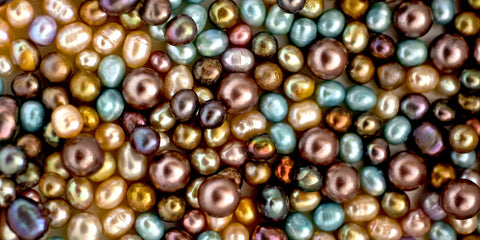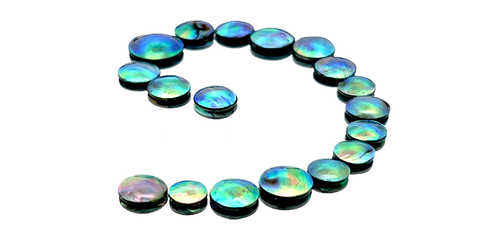What Makes a Blue Pearl Unique
As we head into autumn, we're wrapping up our tourist season. However, it will still be an action-packed month ahead, with many more tour groups visiting our little paradise. But even with the hustle and bustle, our love for the ocean's gift, Blue Pearls, never fades.
Have you ever wondered what makes the Blue Pearl unique or if other natural pearl colours exist? Let me tell you more about it.
The Biology of Colour and Pearls
The sheen and colour of pearls are known as structural colours. These colours come from reflections in the nacre's structures, which can only be seen at the nanoscale level.
Nacre is made up of aragonite crystal layers, which are separated by conchiolin – a protein that molluscs secrete, much like sweat glands on your back. When an aragonite layer forms, it reflects the colour we see in the shell or pearl.
A layer of conchiolin then forms on top to protect and bind the crystals. This creates a beautiful and incredibly robust nacre, much like reinforced concrete, with aragonite being high-carbon steel and conchiolin being concrete.
Pearl Colours
While standard shades such as white, pink, purple, black, gold, and cream are always popular, champagne, chocolate, blue, green, gold, silver, and lavender shades are much rarer but can still be found within the pearl spectrum.

Source: Reddit
Despite this, natural blue pearls are extremely limited. Some pearls boast mesmerizing overtones, displaying a captivating array of multicoloured hues, no matter the lighting.

Source: Avani Jewelry
However, Paua Pearls tend to appear differently depending on the lighting they are presented in, such as blue and green in natural sunlight and purple in artificial white light.

Source: Arapawa Blue Pearls
At our pearl farm, we're blessed with the azure to aquamarine shades that are prominent in the structure of Paua shells. Although we don't produce pearls in as wide a range of colours as other farms, we culture each pearl lovingly, and they're all unique in their own way.
We don't dye or alter them to create a different colour from what nature intended. They are all-natural, and we like to think of them as the Opals of the Sea.
Come and visit us to see how these beautiful pearls are grown sustainably!

